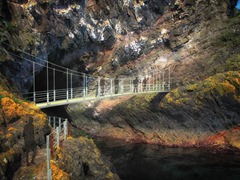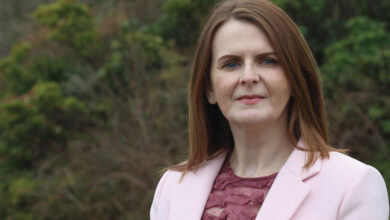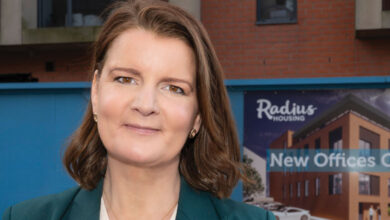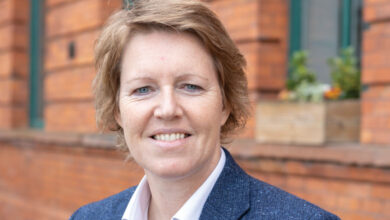Tourism
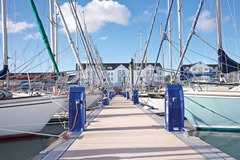 The Mid and East Antrim area boasts huge tourism potential, with existing attractions sitting alongside exciting new projects. A journey around the new Council area highlights the bountiful offering that will form the basis for a comprehensive tourism strategy, bringing investment and jobs into Mid and East Antrim.
The Mid and East Antrim area boasts huge tourism potential, with existing attractions sitting alongside exciting new projects. A journey around the new Council area highlights the bountiful offering that will form the basis for a comprehensive tourism strategy, bringing investment and jobs into Mid and East Antrim.
Carrickfergus
Starting in the oldest inhabited town in County Antrim, Carrickfergus is one of Northern Ireland’s richest heritage sites. The imposing Norman castle is, of course, the centrepiece and welcomes 60,000 visitors per annum. However the heritage offering in Carrickfergus goes far beyond the castle, spanning the town’s history from the Norman era to the Industrial Revolution. Key sites of note include the magnificent Norman St Nicholas’ Church, a wonderfully preserved town wall (the oldest in Northern Ireland), the Andrew Jackson Cottage (birthplace of the 7th President of the USA), Flame Gasworks Museum (the sole surviving coal gasworks in Ireland), and the Carrickfergus Museum which houses many significant finds from the most archaeologically explored town in the province.
The town’s long maritime history is celebrated with a modern waterfront promenade which spans more than a mile of beautiful coastline and almost 1,000 years of history, allowing visitors to experience the historic castle and harbour through to the state-of-the-art 320 berth marina which boasts 5 Gold Anchor recognition and European Blue Flag status as well as Royal Yachting Association Sailability Centre designation.
Larne
Following the coastline from Carrickfergus and into the Borough of Larne, natural splendour combines with Victorian heritage to provide a unique tourism offering. With a £6 million investment underway, the Gobbins Project near Islandmagee is currently restoring the cliff path (which in its heyday attracted more visitors than the Giant’s Causeway) and adding on a multi-functional Visitors’ Centre. It is estimated that the project will attract 50,000 visitors a year with its history and heritage, flora and fauna, stunning views, spectacular walks, three accessible viewpoints and geological features. Set to open in summer 2014, this will be a worthy addition to the world renowned Causeway Coastal Route.
Larne’s strategic location on this coastal route was made possible by the feats of engineering that carved a road out of the rugged coastline. A fine example is still evident today − the Black Arch engineered by William Bald was completed in 1832 and opened up this area of outstanding beauty.
Further along lies Carnfunnock Country Park, with over 191 hectares of mixed woodland, colourful gardens, walking trails and coastlines. The park was originally part of the estate of Sir Thomas and Lady Dixon and reverted to Larne Borough Council in 1957. Many of the original features remain, including the walled garden, the ice house and the lime kilns.
From this country park, the coastal drive winds into the beautiful village of Glenarm − the first of the nine Glens of Antrim. The charming villages of Carnlough and Glencloy (the Second of the Glens) bring a touch of rural charm to the tourist assets of Larne Borough Council.
Ballymena Borough Council is also a Gateway to the Glens, with the fertile land surrounding the market town rolling into the Glens of Antrim. As a gateway destination, Ballymena’s tourism potential has attracted major private sector investment. Galgorm Resort and Spa Hotel has just announced a £10 million investment to create 48 additional bedrooms and new leisure facilities resulting in 60 new full-time and part-time jobs once completed. This follows on from the recent renovation improvements of some £2 million by the Adair Arms Hotel which brought 10 additional jobs.
Ballymena’s tourism infrastructure has recently benefitted from upgrades to the value of £2.5 million at Newferry and Portglenone Marinas for water-based activities. Arthur Cottage, the ancestral homestead of the 21st President of the United States, Chester Alan Arthur, has had a £140,000 face-lift aimed at improving numbers for activity-led events at the site.
Tourism in Ballymena is, however, more than its physical assets. Events deliver real economic benefits to the area. St Patrick’s Day at Slemish mountain sees some 3,000 people visit the borough’s most distinguishable landmark for the climb. Ballymena was delighted to hold the biggest golfing event in Northern Ireland this year with the PGA Open Challenge which saw £563,000 of economic benefit to the local economy and media coverage to the value of £3 million. Other key events are the Mid Antrim Motorcycle Race, Gig in the Bann, the Steam Traction Engine rally, the Agricultural Show and Car Fest. In May 2014, the prestigious Giro d’Italia will take in all three council areas on a 218km stage race that will showcase Mid and East Antrim’s tourism potential to the world.
Councillor Mark McKinty, Vice-Chair of Mid and East Antrim STC, on Planning:
From April 2015, Mid and East Antrim will be handed some powerful tools in which to shape the area and our communities. The new Council will become the planning authority responsible for drawing up development plans and making the vast majority of planning decisions in the area. The new approach will allow councillors, who know the local environment, local needs and views of people living in the community, to make decisions about how Mid and East Antrim will grow and develop. This will also bring us into line with other jurisdictions such as Great Britain and the Republic of Ireland.
 Other functions set to transfer include urban regeneration, local economic development and local tourism, transforming how we do business. Combining these transferring powers with councils’ existing functions will allow for a more productive, joined-up approach which makes the most of our opportunities and best uses all the strengths available. This has a real potential to change the ways we plan our towns, villages and rural areas, and will place a sharper focus on local economic development. The local voice will be able to influence decisions on local business development, economic competitiveness and job creation.
Other functions set to transfer include urban regeneration, local economic development and local tourism, transforming how we do business. Combining these transferring powers with councils’ existing functions will allow for a more productive, joined-up approach which makes the most of our opportunities and best uses all the strengths available. This has a real potential to change the ways we plan our towns, villages and rural areas, and will place a sharper focus on local economic development. The local voice will be able to influence decisions on local business development, economic competitiveness and job creation.
Mid and East Antrim will have a real opportunity to transform the look and feel of the area and create a place that reflects the local culture and environment. Our hope is that this will build vibrant and engaged communities across the Council area and throughout the business and tourism sectors.

